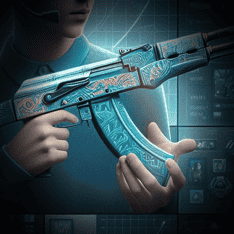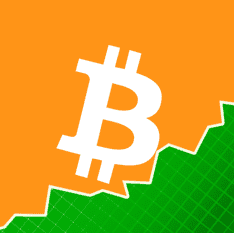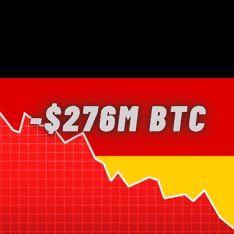
CS:GO skin prices explode: $400K sale tips you need


Get cool CS:GO skins for an epic game performance in 2024. Best Sites Ranked. Unique Finds. Avoid Fake and Scam Stuff. Pro Tips for Getting Better
Alright, let's dive into the details of trading CS:GO skins on third-party websites, shall we? Getting rare skins can be super exciting - like finding a unicorn in your backyard, but it's important to know about the risks.
Oh my! It can get messy, but don't stress, I've got your back (no, really, I do). In this section, we'll break down these risks and give you tips on how to avoid them. By the end, we'll understand the ins and outs of trading CS:GO skins on non-official sites and learn how to stay safe. Sounds fun, right? :)
Hey CS:GO fans, we're about to jump into the world of CS:GO skin trading. Remember, not everything that looks cool is worth much - a life lesson right there! You might have run into security problems on some websites, putting your account at risk from hackers and scammers.
The unregulated market can be a bit sketchy; it has lots of options, but Valve doesn't keep an eye on prices and trades on these sites. This means you could end up:
If things go wrong, don't expect much help - because who needs customer service, right? Bad customer service is another downside of these platforms. If a trade messes up, you might find it hard to get help from the website's customer service team. Lastly, let's talk about skin valuation. Some sites might use outdated or wrong pricing info, leading to unfair trades and losses for users.
As someone who's traded skins for a while, I've found that using these trading platforms can be risky. From security risks to wrong valuations, there are loads of potential problems waiting to happen. Honestly, who needs that stress? Not me :) That's why I stick to reliable websites and always be careful when dealing with other players. Your skins are important – but your safety should always be priority number one. Now that we've talked about the possible dangers, we can carry on with our journey into the world of CS:GO skin trading. Remember, knowledge is power - and I'm here to give you all the info you need to navigate this exciting yet tricky landscape. So, stay tuned, and we'll explore the world of CS:GO skins together. Let's hope it's not as scary as it sounds, haha!
Hey CS:GO fans, let's talk about the exciting, yet risky world of CS:GO skins trading. Here are some tips to help you trade safely and make a profit.
As a seasoned CS:GO skin trader, I've learned that dealing with third-party websites can be risky. But if you're careful, you can turn those risks into rewards - no pain, no gain, right? Stay alert, use secure payment methods, and don't seem inexperienced. Do your research, confirm identities, and keep records of your deals. And if something doesn't feel right, trust your gut and back off. Because in the end, your digital skin collection isn't worth risking your hard-earned money - unless you're a fan of financial Russian roulette! The world of CS:GO skins trading is ready for you. More tips from your reliable CS:GO expert coming soon - stay tuned!
As a CS:GO skin trader, I've been really into watching how skins have evolved. They started off as just part of the Arms Deal update, and now they're part of a million-dollar industry - no big deal, right? ;)
It's crazy to think that what began as simple weapon designs are now super popular collectibles.
The growth to this point is seriously cool... or should I say, 'skin'-tillating?
Remember, talking things through with your trading buddies is super important; making choices without enough info isn't a good idea. If you're into CS:GO, just be careful when trading skins outside of official platforms. Because, you know, who wants to lose their precious Dragon Lore to some scammer? Haha.
Hey, CS:GO fans! If you're trying to up your game with the latest skins, check out our top-rated skin websites. As a fan myself, I've tried skin trading and let me tell you, it's not always smooth sailing - more like navigating through a storm at times. There are loads of issues with third-party sites, like fake item listings and scams. It was risky, but hey, who doesn't love a good thrill? I wanted to understand these risks and learn how to protect myself. After doing a lot of research (and by 'a lot', I mean A LOT) and chatting in community forums, I picked up some useful tips. This info helped me get through the world of skin trading, ready for any hurdles that might come my way. Now, let's talk about what I learned - grab your popcorn, folks! Knowing the risks was the first step. As I got more into skin trading, I found many potential problems that users might face on third-party sites.
To avoid these risky situations, it was important to stay alert against not only dishonest sellers but also sites infected with malware and unreliable pricing databases. Even user ratings weren't always trustworthy. Some seemingly reliable users could have hidden agendas, making it hard to decide who to trust in this unpredictable world of skin trading. Luckily, I wasn't alone in my search for knowledge. By joining community forums and connecting with other CS:GO fans, I learned valuable lessons about the dangers within third-party trading sites. With this understanding of the potential pitfalls, I felt better prepared to handle the challenges of skin trading and protect myself from future dangers. Looking back on my experience, I realized that third-party skin trading sites can be risky, including scams, malware, and unreliable pricing. To protect myself, I did research and connected with other CS:GO fans to gain insights into these potential pitfalls. Now, I approach online transactions with more caution and always put my safety first - because who wants to be the guy saying 'I told you so' to himself, right? It's crucial to prioritize safety over regret. Going back to our initial chat about the dangers of trading CS:GO skins on third-party websites, I can confirm the importance of doing thorough research and using escrow services to reduce these risks. Communication is key when dealing with trading partners, and it's never smart to go into it without enough knowledge. So, CS:GO fans should be careful when participating in skin trading outside of official channels. Prioritize safety and enjoy your trading experience - after all, it's just a game, isn't it? ;)
Hey CS:GO fans, I've been checking out third-party skin trading sites and I've got some tips on how to stay safe. Trading or selling skins online needs you to be super careful - like walking on eggshells, but with more at stake!
So, to stay safe while selling CS:GO skins, be alert and careful. Check the website, don't share login details, be careful with middleman services, avoid dodgy links, keep track of skin values, and use secure payment methods. I've followed these rules and haven't had any problems. Trust me, it's worth it. As someone who's done a lot of skin trading, I can't stress enough how important it is to do your research and use escrow services to reduce risks. Clear communication is key when trading, and jumping in without being prepared isn't a good idea - unless you enjoy losing money, haha! So, fellow CS:GO fans, be careful when trading skins outside of official platforms. Stay safe and enjoy the process.
As a seasoned CS:GO player, I've had my fair share of skin trading - and let me tell you, it's not all sunshine and rainbows.
it's been quite the ride. But one thing's for sure - the growth of CS:GO skins has been super cool. They've come a long way from their humble beginnings in the Arms Deal update, to being a big deal today.
It's like watching your kid grow up, but instead of a kid, it's virtual gun skins.
Haha! It's definitely worth checking out this awesome journey to where we are now.
So grab some popcorn and enjoy the show!
CS:GO skins aren't just part of a game, they're a lifestyle. (No, really!) As a hardcore CS:GO player and blogger, I've seen the skin market grow from a niche thing to a big deal. This all started with the Arms Deal update in 2013 when Valve added cosmetic stuff to make the game cooler. (Because who doesn't want to look cool while shooting virtual enemies, right?) Back then, we didn't know that this small change would start a huge transformation.
Looking back on my time as a long-time CS:GO player, I've personally felt the highs and lows of skin trading. From the excitement of unboxing rare skins :) to the disappointment of being ripped off by a sketchy website :(, it's been a wild ride. One thing's for sure - the evolution of CS:GO skins has been super interesting. Now, let's look at how we got here.
Hey CS:GO fans, ever thought about the risks of selling skins on unofficial platforms?
Sounds complicated, right? But chill, we're gonna dive into these hidden dangers - not literally, of course, we're not that brave - and give you some tips to keep safe while trading. Let's get this chat started, shall we? :)
Hey CS:GO fans, let's chat about these third-party platforms, shall we? I get it, you want those cool skins - who wouldn't? But, you gotta know the risks with these sites.
First off, security is a biggie. Your account might be more open to hackers and scammers on these sites than on official ones. Scary, right?
Then there's the unregulated market. Skin prices on these sites can change a lot, so you might end up paying too much for a skin. Talk about a rip-off!
Scams and fraud are also common issues. There's a bunch of shady sellers who might try to fool you with fake skins or not give you the items you paid for.
Plus, using these sites could break Steam's rules, which could get your account banned. Now, wouldn't that be a party pooper?
If something goes wrong, customer support might not be able to help much.
Also, some of these third-party sites could have bad software that could mess up your computer or steal your personal info. So, safety first when trading CS:GO skins on these platforms, folks! From my own experience, trading CS:GO skins on third-party websites can be risky. You're basically putting your digital identity and hard-earned cash on the line. Valve probably won't help if things go south. My advice? Avoid potential problems. Stick to the Steam Community Market or official trade-up contracts. It's better to avoid unnecessary stress. After all, who needs more wrinkles, right? Let's keep our gaming experiences fun, safe, and scam-free. Game on!
Using third-party CS:GO skin sites can be a bit tricky, like we just mentioned. But hey, don't sweat it! There are some tips that can help keep you safe and make your skin trading experience better.
The main takeaways from this chat are the importance of doing thorough research, using secure payment methods and communication channels, being skeptical of deals that seem too good to be true, and staying informed about market trends. And always remember, risking account security for quick cash is a bad idea. But hey, you knew that already, didn't you? ;)
Alright, here's the updated intro that talks about the history of CS:GO skins and keeps it under 60 words - because who has time for more, right? As a long-time CS:GO player, I've seen weapon skins change from the beginning. From the first Arms Deal update in 2013 till now, the skin market has grown a lot in variety and worth - no kidding!
This article will look at the cool history of CS:GO skins, their beginnings, and changes over time. It'll also check out how:
Jumping right into CS:GO, I've been part of this cool journey since the Arms Deal update. It's been awesome - and by 'awesome', I mean 'mind-blowingly epic' - watching skin trading go from a simple custom feature to a million-dollar business. Valve first brought in skins as a fun way to change up weapons without messing with the game. But when they added rarity levels and unique types like StatTrak and Souvenir skins, they became hot collectibles. Hotter than a summer day in Arizona, if you catch my drift ;) The Steam Community Market has been key in this growth, providing a safe place for trading and really boosting the success of skin trading.
Right now, there are over 1000 skins out there, from common camos to legendary rarities. The huge variety is mind-blowing and adds a cool twist to the CS:GO experience. As a fellow CS:GO fan, it's cool to see how skin trading has evolved since it started. At first, skins were just a fun way to personalize our weapons. But with the addition of:
they quickly became must-have items. The growth of the skin trading industry has been insane. We now have a million-dollar market with dedicated websites and platforms catering to our need for unique and rare skins. One big factor that has helped their value and the success of skin trading is that skin wear is permanent and can't be improved or destroyed with usage.

3 bullish arguments that Bitcoin price just bottomed at $53K

Messi & $WATER promotion: Solana token's wild rise and ethical concerns

Mid-March deadline for Solana ETF: Analyst predicts big moves

Germany sells BTC: government readies $276M Bitcoin sell-off

Why dropshipping is bad in 2024: truth behind the failure rate

Trade skins for PROFIT: 5 ways to make it work

Ukraine's shocking PS4 farm bust for illegal FIFA coins

Hypedrop closing: exit scam claims & withdrawal issues

Hypedrop crypto hack: Alphapo's $61M loss in 2023
The Steam Community Market has played a big role in this journey, giving us a secure platform to buy, sell, and trade skins easily and safely. Fast forward to today, and we have over 1000 skins available, from common camos to legendary rarities. The customization options are endless, making the CS:GO experience even more exciting. Looking back, the evolution of CS:GO skins has been a cool journey. From the initial Arms Deal update to now, the skin market has exploded with variety and value. As we dive deeper into this fascinating world, we'll see how:
Hey, CS:GO fans! Ever thought about the risks of trading skins on unofficial platforms? It's a big deal, because these third-party sites can be dangerous for our digital stuff. So, what are these 'unofficial platforms'? Well, they're basically websites or services that aren't directly linked to Valve Corporation - you know, the guys who made CS:GO. Even if they have cool deals or special features, they usually don't have the safety and customer service that official channels do.
Here are some problems with using these unofficial platforms:
It's always best to be careful and alert when dealing with CS:GO skins." So remember, folks, stay safe out there in the wild world of skin trading!
Hey CS:GO fans, ever thought about the risks of trading skins on unofficial sites? It's something to think about
because these third-party sites can really mess with your digital stuff. By "unofficial", we mean sites or services that aren't directly linked to Valve Corporation - you know, the guys who made CS:GO. These sites might have cool deals or features, but they often lack the safety and customer support you get from official channels.
Let's talk about the problems you could run into on these platforms, shall we?
From years of experience, we've seen that third-party trading platforms can be risky. It's best to do your research and prioritize safety to avoid scams and sketchy websites. Don't let rare skins distract you from potential risks in the CS:GO skin trading world. Stay alert and informed for a good gaming experience. And remember, if it sounds too good to be true, it probably is. ;) Stay safe, gamers!
Hey, CS:GO fans! Let's chat about handling skins on unofficial platforms. You might be thinking, "Why do I need these third-party trading platforms?" Well, they're not always as cool as they seem and can put our digital goodies in danger - talk about a party pooper, right? So, how do we deal with this risky stuff?
Here are some tips:
Be careful of buyers who offer super high prices or ask for personal info that's not needed for the trade. These could be signs of dodgy deals - because, you know, nothing screams 'trustworthy' like someone asking for your social security number for a skin trade, right? Also, keep track of all your trades, including screenshots or receipts, just in case you need them later. And don't forget to stay updated on Valve's rules about skin trading to avoid any issues or account bans. Trading CS:GO skins can be risky, but if you're careful, it's manageable. Always remember to use trustworthy platforms, check out buyers, and protect your personal info. And most importantly, steer clear of suspicious offers. Your skins are valuable, don't let anyone rip you off - unless you enjoy being ripped off, then by all means, go ahead! Stay smart and alert. The more you know, the better you'll handle the unpredictability of skin trading. So, that's the lowdown on safely trading CS:GO skins on third-party platforms. Remember, knowledge is power - and no, that's not just something your teacher says to make you study harder. Keep safe, stay informed, and game on.
This is a fun look at CS:GO skins - from the Arms Deal days to 2024. So buckle up, it's going to be a wild ride!
Want to know about CS:GO skins history? Well, buckle up, let's dive in.
As a big CS:GO fan - and I mean BIG - I've seen how skin trading has changed since the Arms Deal update.
It wasn't just a cool way to personalize weapons without changing the game (because who wants that?), it started a multi-million-dollar industry with websites and platforms for trading, selling, and even betting.
The addition of rarity levels, StatTrak, and Souvenir skins made this trend even more exciting, making it a fun part of the game.
Watching the growth and history of CS:GO skin trading has been super interesting, and I can't wait to see what happens next.
Here are some highlights:
Looking back on this journey, watching the growth and history of CS:GO skin trading has been amazing.
From its start in the Arms Deal update to the big industry it is now, I've seen it all.
The addition of rarity levels, StatTrak, and Souvenir skins only sped up this growth, making it a fun and dynamic part of the game.
It's been an awesome journey, and I can't wait to see what happens next in the world of CS:GO skins :).
Want to know more about CS:GO skins?
Hey, CS:GO fans! Ever thought about the risks of dealing with CS:GO skins on random websites? Well, buckle up; we're gonna chat about the complex world of skin trading. CS:GO skins are a huge deal in gaming - players are keen to show off their unique weapons. But, trading these items on unofficial platforms can be risky... like eating sushi from a gas station risky. Let's start with security.
It's like buying a Picasso at a yard sale, you never really know what you're getting. So, what should a CS:GO fan do? It's best to stick to official platforms like the Steam Community Market, and always do your research before doing any transactions on third-party websites. This will protect your virtual wallet and reduce stress :) Dealing with CS:GO skins on third-party websites can be exciting. I've had my own close calls and intense moments. Like when I nearly got conned out of my favorite knife skin, or when I found a sketchy website with dodgy payment methods. But these experiences taught me important lessons. Now, I stick to official marketplaces and trustworthy skin websites, making sure my transactions are safe and fair. It's not worth taking unnecessary risks. If you're new to this complex world of CS:GO skins, do your homework, read reviews, and always check the platform's credibility before making any trades. It's always better to prioritize safety over regret in this unpredictable market. Now, let's dive into the history of CS:GO skins.
As a hardcore CS:GO fan, I've seen the amazing evolution of skin trading since the Arms Deal update. This was more than just a simple way to customize weapons without affecting gameplay - it kickstarted a multi-million-dollar industry with dedicated websites and platforms for trading, selling, and even betting. Looking back on this journey, following the growth and history of CS:GO skin trading has been an awesome experience. From its simple beginnings in the Arms Deal update to the booming industry it is today, I've seen it all. The introduction of rarity levels, StatTrak, and Souvenir skins only accelerated this growth, making it an exciting and dynamic part of the game. It's been an amazing journey, and I can't wait to see what the future holds for this fascinating part of CS:GO. Now, let's explore the world of CS:GO skins.
Hey, fellow CS:GO fans! Let's chat about how tricky it can be to manage CS:GO skins on third-party sites. There are some real issues you might run into in this exciting but risky game.
It's key to remember that dealing with third-party trading platforms is risky. You might think you're getting a good deal, but the potential risks of fraud, security issues, and lack of control can hurt you fast. It's better to stick to official channels and legit skin trading sites to keep your skins and account safe. Think twice before being tempted by the promise of easy money on wild marketplaces. Your digital assets are worth more than a few bucks saved on trading fees - unless you fancy living life on the edge, of course. Now, let's talk about the history of CS:GO skins. As a die-hard CS:GO fan, I've been here for the crazy transformation of skin trading since the Arms Deal update. This wasn't just a simple way to customize weapons without affecting gameplay - it kicked off a multi-million-dollar industry with dedicated websites and platforms for trading, selling, and even betting. Looking back on this journey, tracing the growth and history of CS:GO skin trading has been awesome. From simple beginnings in the Arms Deal update to the booming industry it is today, I've seen it all. The introduction of rarity levels, StatTrak, and Souvenir skins only boosted this growth, making it an exciting and dynamic part of the game. It's been a wild ride, and I can't wait to see what the future holds for this cool part of CS:GO. Now, let's keep exploring the world of CS:GO skins.
Hey, CS:GO fans! Let's chat about the tricky business of managing CS:GO skins on third-party sites. We'll touch on some of the issues you might run into in this cool, but risky game. You might've bumped into shady stuff on these websites, like phishing scams or fake skin selling, which can cost you money - talk about a bad deal, huh? If you've had problems with transactions or disputes on these platforms, you probably found it tough to fix the issue or get your cash back.
Dealing with third-party trading platforms is like playing a risky game. You might think you're getting a bargain, but the potential risks of fraud, security issues, and lack of regulation can quickly bite you. It's smarter to stick to official channels and legit skin trading sites to keep your skins and account safe. Think twice before being tempted by the promise of quick cash on unregulated markets. Your digital assets are worth more than a few bucks saved on trading fees - trust me on this one. Now, let's dive into the history of CS:GO skins. As a hardcore CS:GO fan, I've been on the front lines of the incredible evolution of skin trading since the Arms Deal update. This wasn't just a simple way to customize weapons without affecting gameplay - it kicked off a multi-million-dollar industry with dedicated websites and platforms for trading, selling, and even betting. Looking back on this journey, tracking the growth and history of CS:GO skin trading has been an epic experience. From humble beginnings in the Arms Deal update to the booming industry it is today, I've seen it all. The introduction of rarity levels, StatTrak, and Souvenir skins only fueled this growth, making it an exciting and evolving part of the game. It's been a wild ride, and I can't wait to see what the future holds for this fascinating part of CS:GO. Now, let's explore the world of CS:GO skins.
Hey, CS:GO fans! Ever thought about where those flashy in-game items - aka skins - came from? They're the things that let us flex our style and personality while playing. I'm going to walk you through the cool history of CS:GO skins, starting from the Arms Deal update up until now.
As the game keeps evolving, it's exciting to guess what awesome new skins might pop up next. Come with me as we dive into the amazing world of CS:GO skins and uncover the story behind these digital treasures. And who knows? Maybe one day, your skin could be worth more than your car! Haha :)
This article was written, checked and verified by multiple authors to ensure maximum accuracy and up to date data. We strive for providing the best and most helpful resources about CS:GO Skin Sites available.

Have suggestions or want to become an author for our cs:go skin sites magazine as well?